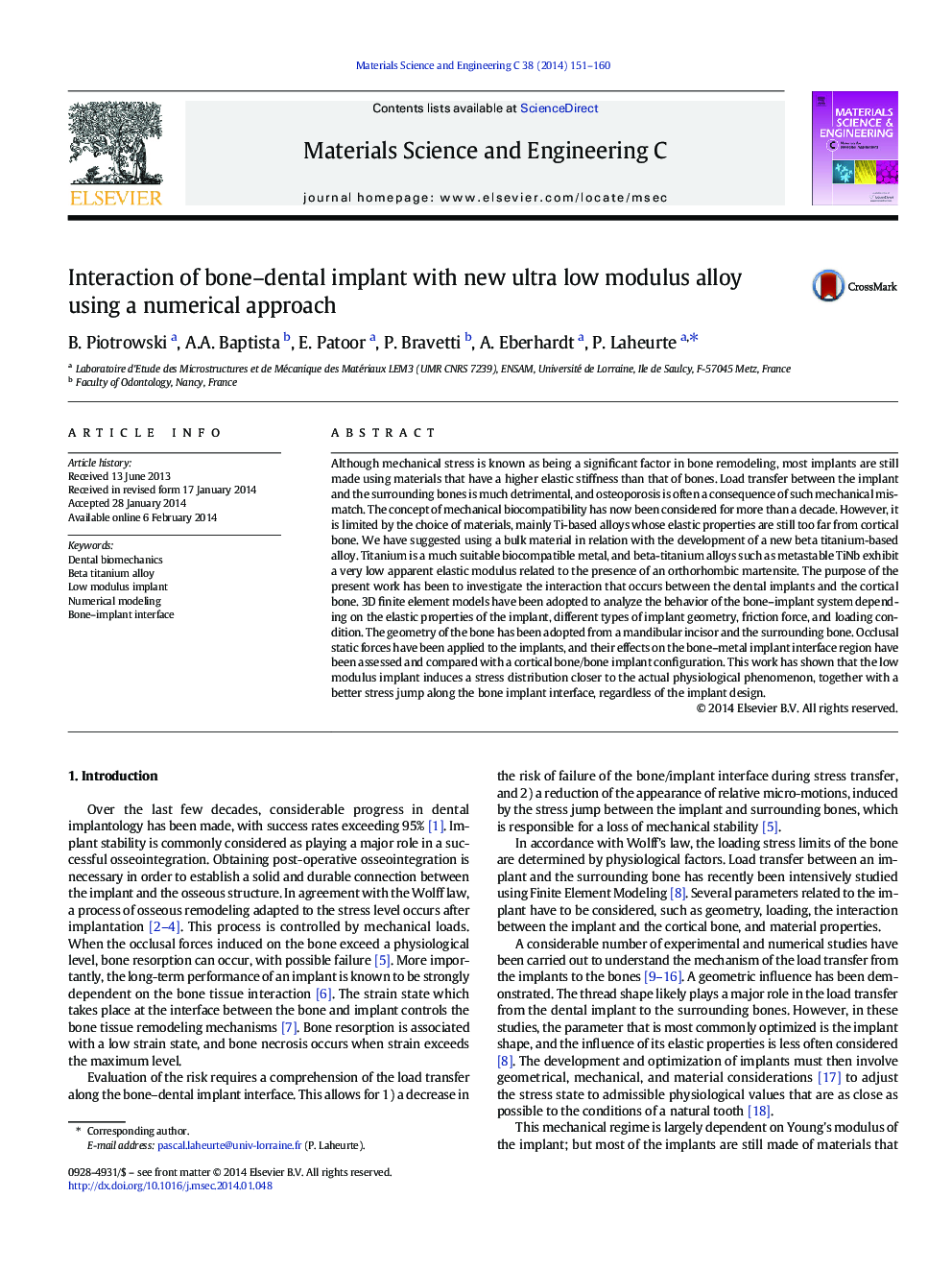| کد مقاله | کد نشریه | سال انتشار | مقاله انگلیسی | نسخه تمام متن |
|---|---|---|---|---|
| 1428826 | 1509183 | 2014 | 10 صفحه PDF | دانلود رایگان |
• We model dental implant with four various Young's moduli and two shapes.
• The low Young's modulus come from new beta-titanium alloys developed.
• We examine changes in the stress distribution in bones and stress jump at interface.
• While approaching the Young's modulus of bone, stress shielding is reduced.
• The low modulus influence on stress distribution is not proportional to the load.
Although mechanical stress is known as being a significant factor in bone remodeling, most implants are still made using materials that have a higher elastic stiffness than that of bones. Load transfer between the implant and the surrounding bones is much detrimental, and osteoporosis is often a consequence of such mechanical mismatch. The concept of mechanical biocompatibility has now been considered for more than a decade. However, it is limited by the choice of materials, mainly Ti-based alloys whose elastic properties are still too far from cortical bone. We have suggested using a bulk material in relation with the development of a new beta titanium-based alloy. Titanium is a much suitable biocompatible metal, and beta-titanium alloys such as metastable TiNb exhibit a very low apparent elastic modulus related to the presence of an orthorhombic martensite. The purpose of the present work has been to investigate the interaction that occurs between the dental implants and the cortical bone. 3D finite element models have been adopted to analyze the behavior of the bone–implant system depending on the elastic properties of the implant, different types of implant geometry, friction force, and loading condition. The geometry of the bone has been adopted from a mandibular incisor and the surrounding bone. Occlusal static forces have been applied to the implants, and their effects on the bone–metal implant interface region have been assessed and compared with a cortical bone/bone implant configuration. This work has shown that the low modulus implant induces a stress distribution closer to the actual physiological phenomenon, together with a better stress jump along the bone implant interface, regardless of the implant design.
Journal: Materials Science and Engineering: C - Volume 38, 1 May 2014, Pages 151–160
